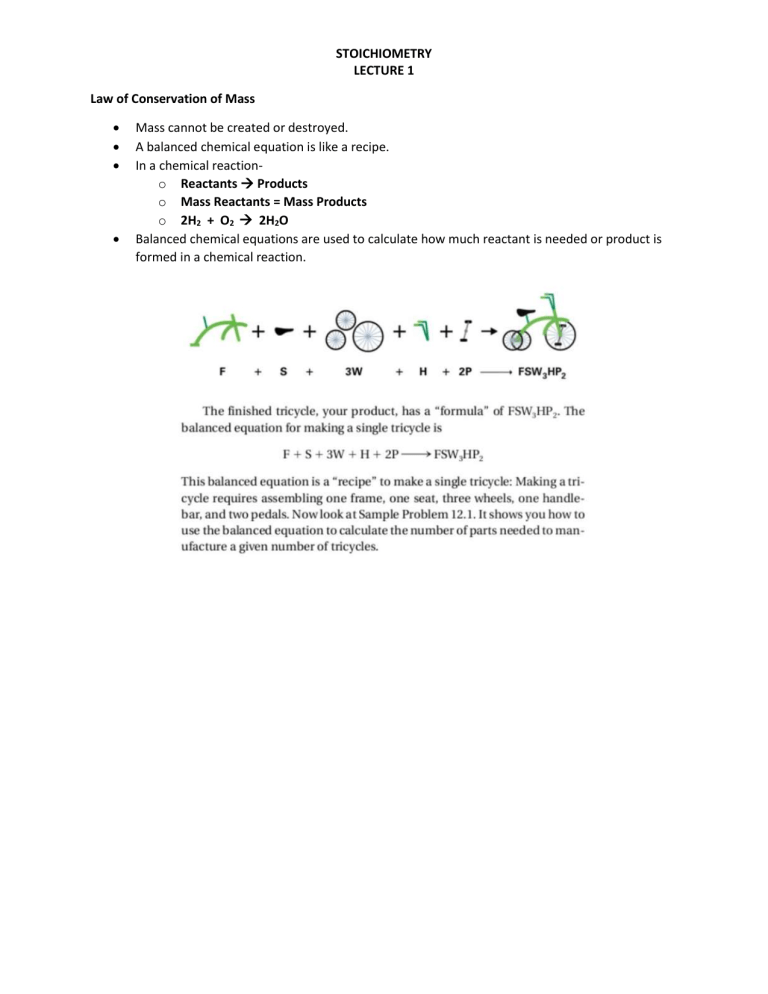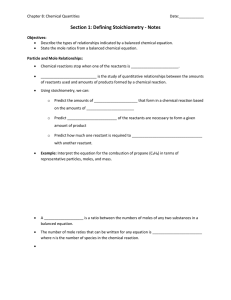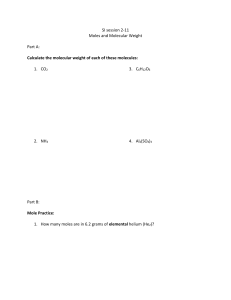
STOICHIOMETRY LECTURE 1 Law of Conservation of Mass Mass cannot be created or destroyed. A balanced chemical equation is like a recipe. In a chemical reactiono Reactants Products o Mass Reactants = Mass Products o 2H2 + O2 2H2O Balanced chemical equations are used to calculate how much reactant is needed or product is formed in a chemical reaction. STOICHIOMETRY LECTURE 1 Stoichiometry: The calculation of quantities in a chemical reaction. Interpreting Chemical Equations N2(g) + 3H2(g) 2NH3(g) A balanced chemical equation can be interpreted in different terms of quantities that include # of atoms, molecules, or moles; mass; and volume. Number of Atoms Number of Molecules 2 atoms N 1:3:2 ratio 6 atoms H STOICHIOMETRY LECTURE 1 Moles Coefficients of a balanced chemical equation indicate the relative numbers of moles of reactants and products in a chemical reaction. We can see that the number of moles of product do not equal the number of moles of reactant. 1 mole N2 reacts with 3 moles of H2 to form 2 moles of NH3. Mass A balanced chemical equation obeys the law of conservation of mass. Using the mole relationship, you can relate mass to the number to atoms in the chemical equation. Mass of 1 mole of N2 (28g) plus the mass of 3 mole of H2 (6g) = the mass of 2 mole of HN3 (34g). Even though the number of moles of reactants doesn’t equal the number of moles of product, the total number of grams does. Volume You assume standard temperature and pressure (STP) and the equation tells you the volumes of gases. 1 mole of any gas at STP occupies a volume of 22.4L. The equation indicates that: o 22.4L of N2 reacts with 67.2L (3 X 22.4L) of H2. o This reaction forms 48.8L (2 X 22.4L) of NH3.






